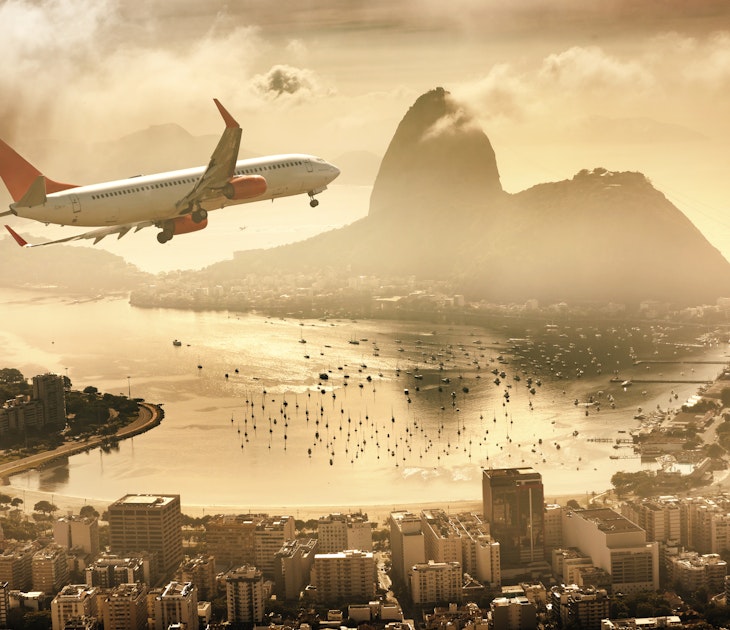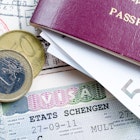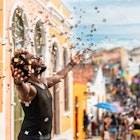Regularly cited as one of the best-value countries to visit in South America, Colombia is a place where your cash is destined to go further.
With fixed-price lunch menus and inexpensive pola (beer), you can dine like royalty, and hostels are plentiful and cheap. A network of affordable interregional buses and low-cost airlines means you can often score a bargain and this further opens up the country to even the most budget-minded travelers.
Better still, some of Colombia’s finest pleasures – think practicing salsa’s frenetic footwork in Cali or catching an impromptu performance of a porro band in a sultry Cartagena square – are completely free.
Use local Spanish-language airline websites for the cheapest fares
Thanks to a glut of ultra-low-cost carriers in the Colombian airline industry, the difference in cost between flights and buses has narrowed significantly. However, don’t be fooled by the cheap deals you’ll find on aggregator websites for airlines – the lowest fares rarely include luggage, and adding bags can often double the ticket price.
However, inexpensive flights are available, particularly for trips out of Bogotá – the cheapest fares can be found by visiting the airlines' Spanish-language websites. Prices can be half what you see on the English-language site. If you don’t read Spanish, use the translate feature on your web browser to help you complete the purchase.
For obvious environmental reasons, flying only makes sense to avoid a particularly arduous or time-consuming journey. For example, the only way to reach Leticia in the Amazon Basin without flying is by slow boat from Iquitos, Peru or Manaus, Brazil.

Overnight buses can save you money
As with most countries in South America, distances between cities in Colombia are vast, and buses are by far the cheapest means of transport, offering big savings compared to flying. If you want to stretch your pesos to the absolute maximum, opt for overnight buses rather than daytime departures and save the cost of a night's accommodation.
Admittedly, this is only an option for those who can sleep through any distractions, as roads can be winding and bumpy, and in-journey entertainment is usually loud (pack earplugs!).
Get out into nature for next to nothing
Packed to the brim with spectacular scenery and pristine natural landscapes, Colombia is an outdoor adventure playground. Its network of national parks showcasing lofty Andean peaks, emerald hills and sun-drenched coral-white beaches are mostly accessible with only a token entrance fee.
For serious hikers, many of the country’s best hikes, including the Lost City Trek, require you to hire a guide, though, which does add up.
Hunt down the best lunch menus
Across Colombia, it’s common to see chalkboards outside restaurants promoting the menú del día or ejecutivo, a three-course lunch that offers a very affordable way to fill up on delicious, if heavy, local dishes.
For as little as US$2, you can chow down on a traditional soup or salad, an entree (usually based on meat, rice and plantain), and freshly squeezed fruit juice. Follow your nose to find the best lunch spots: they’re typically crowded with locals between noon and 2pm.

Street food will keep you in affordable snacks
Street food stalls offer the hungry plenty of options for a tasty snack with big savings on restaurant prices. The most popular food choice by far is the empanada, a tasty pastry packed with meat or vegetables – although they’re deep-fried, so you can only eat so many!
Arepas (flattened cornmeal cakes filled with cheese or meat) are a filling breakfast option that comes in handy if your accommodation doesn’t provide anything substantial to set you up for the day.
Pack a water filter and ditch plastic
Water is potable in most Colombian cities, but you should stick to purified water in smaller towns and rural areas. Rather than relying on single-use plastic bottles or water purification tablets that leave an unpleasant flavor, bring a water filter that can quickly and easily make tap water safe to drink. You'll be saving the local environment and your hard-earned cash.
Self-cater and shop at markets to cut costs
Restaurants are affordable for dining out in most parts of Colombia, but staying in hostels with communal kitchens can help you cut your costs even further. Colombian grocery stores might feel like pleasant places to shop, but most are aimed at wealthy Colombians and prosperous tourists.
For a wealth of choice and consistently low prices, make a beeline for the local food market, such as the Plaza Minorista José María Villa in Medellín or Plaza de Mercado Paloquemao in Bogotá.
At Colombia's markets, you’ll encounter more types of local fruits and vegetables than you’ll be able to identify, as well as the usual cupboard staples, fresh cheese and meat, and traditional Colombian fare that is hard to find in even the most authentic local restaurants.
Local prices are reserved for those who can muster up a bit of Spanish – you’ll be charged top dollar (which admittedly is still very affordable) if you can only complete the transaction in English.
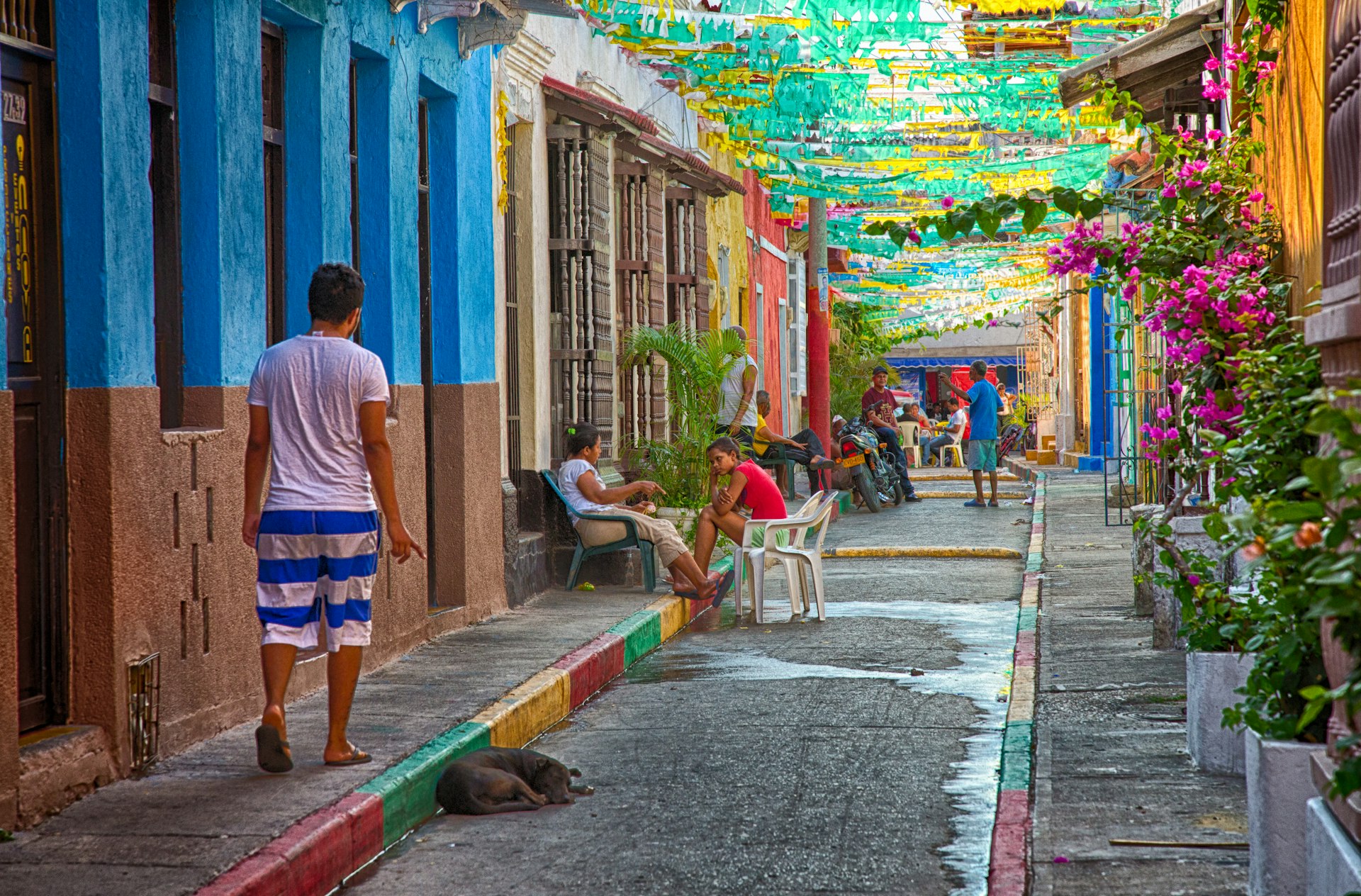
Steer clear of the chicest city neighborhoods
Colombia’s cities have become seriously trendy in the past decade, with El Poblado in Medellín and Cartagena’s fashionable Old Town charging high prices for dining and accommodations. A chic rooftop bar might look great on your Instagram feed, but it’s guaranteed to leave a greater impression on your wallet. Going out in one of these cool spots will set you back at least double the cost of exploring a less ritzy neighborhood.
Swap El Poblado for Laureles and Cartagena’s Old Town for the Getsemani district and experience Colombia a little more authentically, away from the tourist crowds. You’ll find plenty of inexpensive B&Bs, backpacker-friendly hostels and great-value apartments in these areas, too.
Agree on taxi fares before committing
Taxis are metered in Colombia, but tourists are still a prime target for elevated fares. To avoid this, ask for an estimation of the price of the ride before hopping into the taxi. Unlike in Europe or North America, ride-shares like Uber can be a slightly more expensive option over a conventional taxi, but fares are agreed when you book your ride, meaning you can be sure you won’t get ripped off.
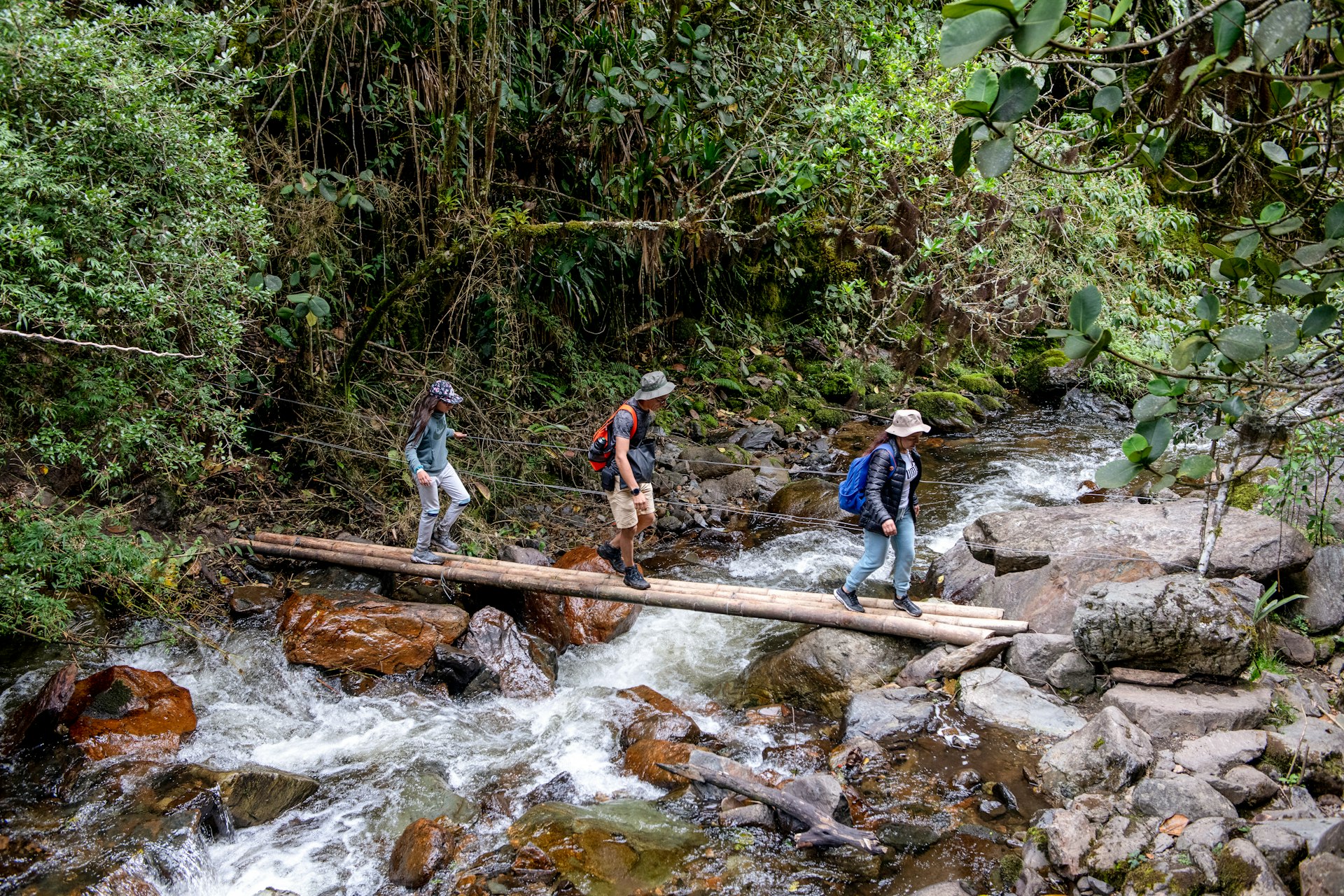
Opt for hammocks or camping for the cheapest sleep
Camping isn’t common in Colombia, but it's the standard form of overnight accommodation on hiking expeditions into national parks, and it’s occasionally possible in other parts of the country. The cheapest lodgings in beach-sprinkled Parque Nacional Natural Tayrona are either tents or hammocks, many sitting right by the sand with glorious ocean views.
Highland towns such as Salento, Villa de Leyva and Suesca have campgrounds where you’ll be charged as little as US$3 per night for pitching up, but you’ll need your own gear.
Avoid traveling in December and January
Colombia’s main holiday season, from December to January, coincides with the country’s warmest and driest weather, but this means you'll pay vastly more for accommodation and transport. The sweet spot for good weather and cheaper prices tends to fall in the shoulder season months of November, February and March.
Daily costs in Colombia
- Dorm bed in a hostel: US$10–25
- Basic room for two: US$20–50
- Self-catering apartment: from US$30
- Bus ticket from Bogotá to Medellín: US$18–23
- Cup of coffee: US$0.80–$1.50
- An empanada: US$0.50–$0.80
- A menú del día set lunch: US$2–$5
- Restaurant dinner for two: US$25–$40
- Bottle of beer at a bar: US$1–$2

